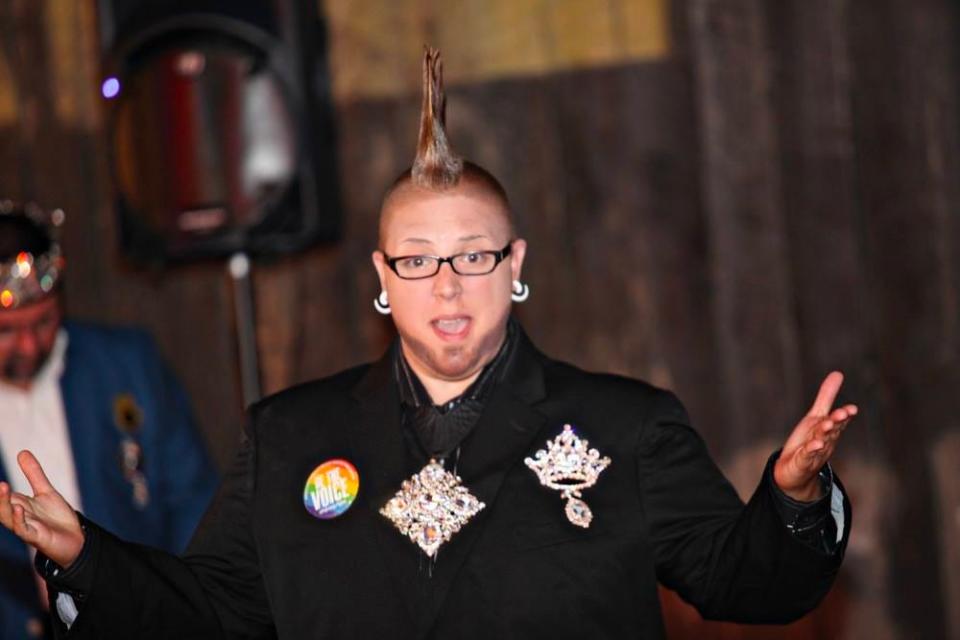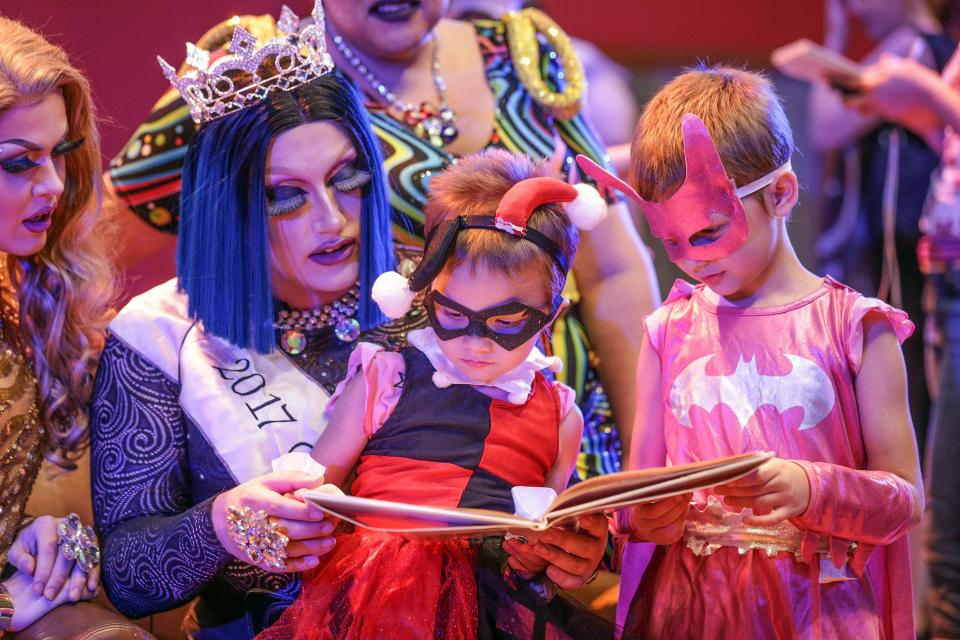Drag isn't a danger to kids. It can help them find themselves – just like it did for me.
I tried on a chest binder for the first time a few days before I was scheduled to perform in my very first drag show.
In that moment, I experienced gender euphoria – or a feeling of joy because of how my gender was being expressed – after seeing my chest flat as I always imagined it should be. That began my journey into understanding my identity as a transgender person. But drag didn’t just help me shape my personal identity. It also helped me find a second family, grow as a leader, provide support to my community and so much more.
That’s why it is so heartbreaking for me to see bill after bill introduced in statehouses across the country aiming to outlaw drag. These so-called drag bans are part of a much larger effort by anti-transgender politicians to weaponize gender identity in hopes of scoring political points.
Opinions in your inbox: Get exclusive access to our columnists and the best of our columns
LGBTQ-affirming spaces save lives
Politicians are trying to paint drag as dangerous, but in reality, drag creates lifesaving and affirming spaces for so many. When I first started performing in drag, it was on my college campus. I was trying to find my place in the world and figure out who I was as a person, and drag let me explore. Drag allowed me to try on different expressions and identities, all while being supported by my peers.
Looking back my performances were not that great, but I had a community, brought together by drag, that supported me and affirmed me for who I was.

It’s no hyperbole to say that the power of LGBTQ-affirming spaces is lifesaving. The Trevor Project’s research has consistently found that LGBTQ youth who live in an accepting community, report access to LGBTQ-affirming spaces and feel high social support from those around them report significantly lower rates of attempting suicide in the past year compared with their peers.
Young people deserve to have more opportunities to experience affirming environments, and the drag community is one of those places.
What are people afraid of?: We celebrated my husband's 90th birthday at a drag show
Leaning into culture-war cruelty: DeSantis expands anti-LGBTQ 'Don't Say Gay' law. Might as well not say 'president' either.
Drag provides a way to give back to the community. When I started doing drag outside of my college campus, I found myself among a group of drag queens and kings that spent the vast majority of their time in drag raising money for local charities as part of the Imperial Court System (ICS). My local chapter was one of 70 chapters of drag performers who raised money for their local communities.
Originating as a way to fund HIV/AIDS nonprofits, their mission has expanded beyond the LGBTQ community, supporting food banks, animal shelters, cancer research, anti-violence organizations and other well deserving charities. But the ICS isn’t the only group of drag performers doing good for the community. Drag performers all across this country spend their time and money putting on their best, simply to host benefits and volunteer their time for charities.
Glitter is the only dangerous thing about drag
In recent years, there has been a systematic attack on all things related to gender identity and gender expression. These past few months have seen countless laws that seek to ban drag performances in a variety of ways.
There is a narrative that we should be protecting our children from drag performers, as if they are dangerous. The only thing dangerous about drag queens is the amount of glitter you may come in contact with.
That'll save us!: Tennessee Republicans target America's greatest threat – drag shows
'I just hope that he's always confident': Raising LBGTQ+ kids to be strong, successful
If we really want to protect our children, we should be focused on providing affirming environments for all young people, supporting youth with mentors, and adding resources to schools and public libraries to increase literacy – all things ironically that drag performers are already doing.

There are a lot of things that pose a threat to young people in this country these days. Young people are facing a mental health crisis, and it’s hitting LGBTQ young people in horrifyingly disproportionate ways. LGBTQ young people are more than four times as likely to attempt suicide than their peers. That’s not because they are inherently prone to suicide risk, but rather, they are placed at higher risk because of how they are mistreated by society.
Kids are in a mental health crisis: We need real resources – not culture wars
Gender-affirming care is crucial: Transgender young people face a mental health crisis. Extremist politics makes it worse.
Too few have listened: Alarm on children's mental health has been ringing for decades
Members of our community – especially our youngest – are regularly exposed to anti-LGBTQ language, discrimination, bullying and violence. And the more than 600 anti-LGBTQ bills that have been introduced in states across the United States already this year – including dozens of anti-drag bills – are making matters worse.
These proposed laws are an attempt to push LGBTQ rights back to our pre-Stonewall days, when a person could be arrested by the police simply for wearing clothes that were “meant for the opposite sex.”
Opinion alerts: Get columns from your favorite columnists + expert analysis on top issues, delivered straight to your device through the USA TODAY app. Don't have the app? Download it for free from your app store.
These new bills represent a longstanding attempt to prevent our community from coming together to be ourselves. They are an attempt to erase LGBTQ people from the public eye and put us back into the closet and, frankly, every drag performer knows that there isn’t even enough room in the closet for our drag garments, let alone ourselves.
But these drag bans will not dull our shine. Drag culture has always been a way for people to explore gender expression, provide entertainment and build community. Where some people just see glitter, glam and glitz – where certain politicians see something to fear – I see individuals willing to be vulnerable, digging into their deepest selves and giving back to the community.

I count myself lucky to have been a part of such an amazing community of drag performers. I encourage everyone to see past the fearmongering of certain politicians and see drag for what it truly is: a treasured part of the LGBTQ culture that encourages self-expression and community building.
We will continue to be loud, and bold, and refuse to shrink ourselves for the sake of a handful of hateful politicians. And I hope that our allies will have our backs through it all.
Keygan Miller (they/them) is the interim director of Public Training at The Trevor Project.
You can read diverse opinions from our Board of Contributors and other writers on the Opinion front page, on Twitter @usatodayopinion and in our daily Opinion newsletter. To respond to a column, submit a comment to letters@usatoday.com.
This article originally appeared on USA TODAY: Drag bans hurt LGBTQ kids who need community, not hateful laws

